Chinese restaurants and tea restaurants in Britain and overseas Chinese food are the right thing to do.
Chinese restaurants, tea restaurants and overseas Chinese food in Britain are included in the topic # Afternoon Tea 1 Content # Life Bookstore New Book Recommended 31 Contents #2021 New Book 43 Contents.
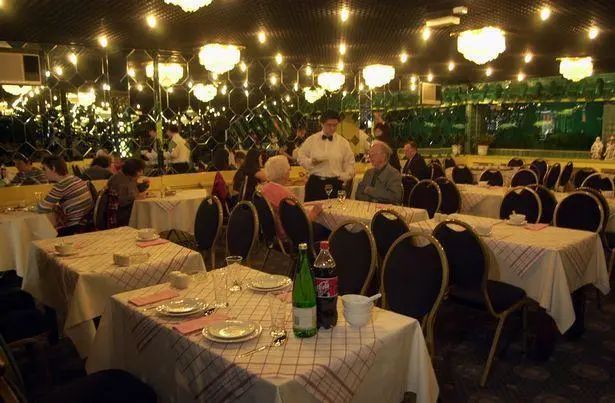
▲ Beijing Restaurant, the oldest famous Chinese restaurant in Leicester, England.
Image source: www.163.com
The taste of Chinese restaurants in Britain has changed from the traditional Cantonese flavor to the Hong Kong flavor. Especially in China City, the center of London, there are hundreds of very good Chinese restaurants, all of which can basically cook authentic Cantonese food, as well as dazzling hot "Cantonese dim sum", and Cantonese-style porridge with different flavors is also available. Overseas Chinese food seems to have the right style.
Afternoon Tea, Tea Restaurant and Hong Kong Pavilion
Author: Zhou Songfang
After Chinese arrived in England, he was not used to the food itself, but also to the time and way of eating. Chinese gets up early and goes to bed early, and has three meals a day, but Britain gets up early and goes to bed late, and it is divided into four or five meals. Students are no exception, and international students can only do as the Romans do. Some international students wrote down the meal schedule at that time:
As a rule, I get up at about 7: 30, and have breakfast after 8: 00. The food is milk cereal, ham and eggs, bread jam, cheese and tea. The earliest class time starts at 9: 00, and it is customary for British people to have lunch around 1: 00 pm, so the latest class time in the morning is from 12: 00 to 1: 00. In the afternoon, classes are held from 2: 00 to 5: 00, and about 5: 00 is Teatime for English people. English tea is eaten regularly (from 4: 00 to 5: 00, it is called High Tea), and it must be accompanied by bread jam, milk oil, cake cheese and fruit. We regard it as a meal, or at least it should be called refreshment. In the past, this kind of habit was only used by middle-class families, but it has been popular in the general society in recent decades. Although the food materials are different, few people don’t eat tea. Self-study time for students after tea. Dinner is served at about 9 o’clock, and the food is usually simpler than lunch, probably a cold dish, bread and cream, cheese and fruit and a few biscuits. After dinner, you can talk freely, or read soft words, or listen to the radio and phonograph. The usual bedtime is around eleven o’clock.
From this point of view, English dinner is like our midnight snack, and afternoon tea is like our dinner, and it is also as important as us. There is a saying that can show this degree of attention: "English people are used to having tea at five o’clock in the afternoon as usual." A pot of black tea, two pieces of bread, a plate of snacks and a plate of lettuce. Sometimes add an egg or a small fish. " In Chinese’s view, it’s not grand, but in Britain, "it’s better to be a housewife, and guests must watch a movie or eat China rice as a reward". Invite you to have afternoon tea. You should invite her to a movie or even a China meal, just like inviting someone to a western meal on the beach in the early days. That’s simply too much! Mr. Zhu Ziqing also said:
Europeans eat three meals a day, and the weight is quite different. Like Germany, there is only coffee and bread in the morning and cold food in the evening, only lunch is heavier. In France, coffee, moon cake, lunch and dinner seem to be average in weight. Britain pays equal attention to breakfast and dinner, and its lunch is lighter. Britain pays attention to breakfast, just like Chengdu in China. There are porridge, ham and eggs, bread, tea, and sometimes salted fish and fruit. Lunch is simple, you can just eat a piece of toast and a cup of coffee; Some small restaurants sell lunch boxes, such as cold fish and meat, but no dinner boxes.
However, no matter how much attention is paid to rich afternoon tea, it is afternoon tea after all, and it can’t be compared with dinner or dinner. Therefore, Zhu Ziqing probably regarded China’s "little man" as a "gentleman" in Britain, and thought that they often treated people with cheap and simple afternoon tea instead of expensive dinners: British people drink tea once a day at about 4: 30 pm, with toast and butter. When you invite a tea party, there are naturally other things, such as ham with bread, raw pea seedlings with bread, tea steamed bread and so on. They attach great importance to afternoon tea, which is almost indispensable. You can take this opportunity to treat people, which is much simpler and cheaper than inviting dinner. He also said: English people prefer tea to coffee, contrary to French people; They can’t make coffee well either. Most of the tea we drink now is Indian tea; Although China tea is sold in the tea and rice shop, there are few customers. It certainly has something to do with not allowing the profits to spill over, but it is not conducive to the publicity of China tea (for example, it is not clean when fried), and the main reason is that the tea taste is too weak. Indian tea is thick and bitter, and milk and sugar are just right; China black tea is not strong enough, but it smells good. It is strange that the tea sold in the tea and rice shop is so light in color, smell and fragrance that it is inexplicable how that kind of tea can be shipped out. Actually, that’s right. Tea restaurants focus on rice, tea is not important, what is the taste? Just like drinking tea in Guangdong, it is important to eat, and the taste of tea is not counted; Also like the popular tea restaurant, who knows that it is not from tea restaurants?
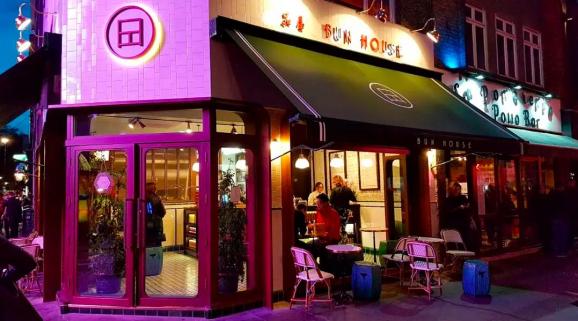
▲ Bun House Tea Room Teahouse in London.
(Source: sohu.com)
Tea restaurants are everywhere in Britain, and they are relatively cheap, so when Zhu Ziqing visited Britain in May and June 1932, he had a lot of experience and many observation records:
There are three cheap tea restaurants: Lyons, Express Milk Room and ABC Bakery. Each family has opened many stores, all over the city and outside; ABC is less and more expensive, and Laaynes is the most. The fried veal, veal liver and braised duck pieces in the express dairy are also delicious; They burn duck pieces with charcoal fire, so it has a China flavor. ABC fried beef liver can also be eaten, but it’s almost impossible to get old in a hurry; The dim sum is well baked, and several of them are comparable to the French bakery in Beiping. There doesn’t seem to be anything outstanding in Laaynes; But there are two "corner shops" in his house, both at the corner of downtown, but there are delicious foods there. The corner shop has two large rooms, one is upper and lower, and the other is three floors and three large rooms, which can accommodate about 1,500 people. There is a band playing in the evening. As soon as I entered, I saw it was dark and full of people. The corridor was narrow enough, but the weather was quite wide (a British student ridiculed it as "the palace of the poor", which might be good); There, I often find and stand for a long time before waiting for an empty seat. All the stores in these three stores use waitresses, but only two corner stores use some waiters-waiters are more expensive. The waiters and waitresses all wore black uniforms, and the women even wore white hats to entertain the guests in layers. Only in corner shops do you have to tip (although the door is marked "no tip"), and there is no need to tip in these three shops elsewhere. I have been to a corner shop, and the roast chicken is still delicious; But a chicken leg is one yuan and fifty cents in China, and it is more expensive to eat chicken wings. Tea restaurants sometimes have dominoes, etc. for guests’ entertainment, but they rarely ask the waiter for fun; Where there are many guests,There are always people waiting for seats, so there is no need to prepare them. In addition, there is an oyster shop, which specializes in oysters and is not cheap; A landlady told me that it was "unsanitary", but there were no fewer people to eat. Eating oysters is not suitable in summer, so the British say that oysters are out of order if the name of the month is not "R" (May, June, July and August).
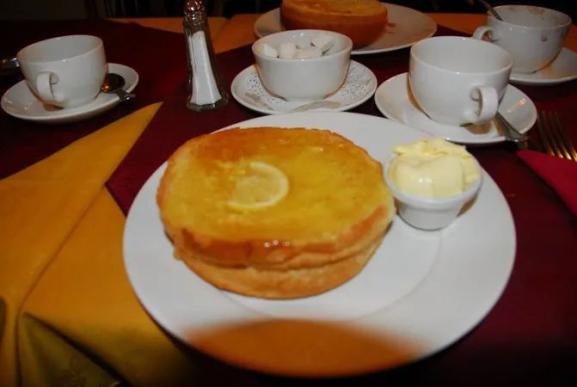
▲ SALLY LUNN’S, an ancient bakery in Bath, England.
(Source: ctrip.com)
Through observation, Zhu Ziqing believes that tea restaurants are the true colors and can represent British cooking: "Old city restaurants and tea restaurants are the local flavors. Tea restaurant and frying shop are actually nicknames for small restaurants. The’ rice’ in the tea restaurant originally refers to lunch, but the things sold are not simple, and dinner is full; In addition to frying beef ribs and mutton ribs, the frying shop also sells other things. " There is a kind of sweet sesame cake (Muffin) and Crumpet in the tea and rice shop, which makes Zhu Ziqing never forget:
Sweet sesame seed cake is like our fire, but it has no stuffing, soft and slightly sweet, as if it were made with rice flour. There are many small nests on the cake surface, which are like beehives, relatively thin and like rice noodles. Both of them are about from France; But the sweet biscuits came early, at least 200 years ago. Chefs mostly live in Drury Lane, the place where the famous theater is located. I used to sell it with a plate on my head and a bell in my hand. At that time, people loved to eat, bought them, spread more butter on them, and baked them on the fireplace in the living room or dining room, so that the oil could be soaked in them and bitten off in one bite, or they would get stuck in the quarrel on both sides. This kind of leisure life is very interesting. However, the later Woer cakes were easier to soak in oil, more fragrant, not too thick, too soft, chewy and stylish; People like it gradually, so they buy less sweet biscuits. A lady was sad when she saw this situation, so she wrote to The Times to express her grievances for the sweet biscuits. The Times specially made a small editorial to persuade people to eat sweet biscuits to preserve the ancient style. However, I would rather keep the bad things that the lady said about Woer’s cakes. About that commentator also likes to eat Woer’s cakes.
This kind of English tea restaurant is quite similar to the tea restaurant that rose in Hong Kong later. I wonder if there is any origin between the two, and if so, what kind of origin? Although there are no more materials to explain at present, it is quite intriguing; The influence of Hong Kong diet on Britain increased day by day.
Due to the blockade of the newly established People’s Republic of China (PRC) by the western world, the number of overseas Chinese dropped sharply after 1950s, and it didn’t pick up until 1980s after China’s opening-up and reform. Therefore, the development of overseas Chinese restaurants over the past 30 years has formed a relatively unique form. In 1936, there were more than 8,000 overseas Chinese in Britain, and by 1955, there were only more than 4,000 overseas Chinese, a decrease of half. However, with the influence of the ultra-left trend in the mainland in the 1960s, Hong Kong immigrants joined in one after another, rising to 43,000 in 1971, more than 100,000 in 1981 after the reform and opening up, and reaching 150,000 in the mid-1990s. The same is true of Germany. In the 1930s, there were only over 800 people, and by 1991, there were over 50,000 people. Among them, at the end of December 1986, the Federal Statistical Office of West Germany announced that there were 7730 people from Hong Kong and Southeast Asia who went to Germany to run restaurants.
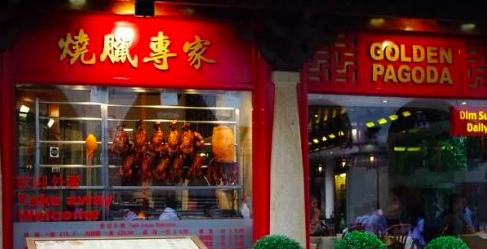
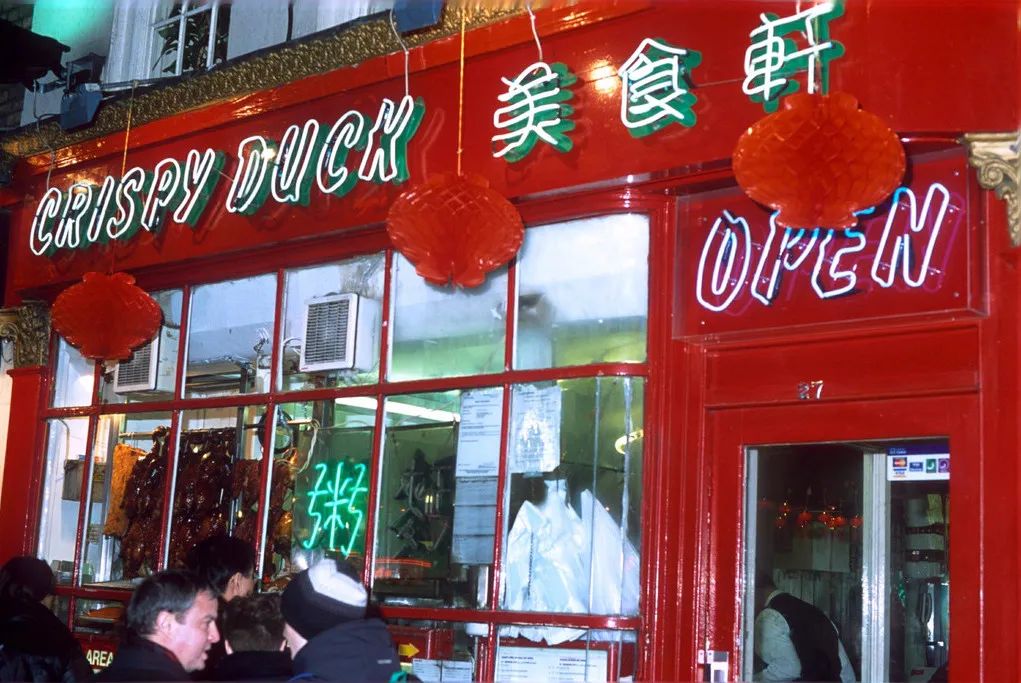
▲ Chinese restaurant in Chinatown, London
Image source: lushang.sdnews.com.cn
With the increasing number of overseas Chinese, the number of Chinese restaurants has increased even faster, because the early overseas Chinese had a low starting point and it was difficult to accumulate the original capital for opening restaurants, which was much easier to open than the later immigrants, especially those from Hong Kong. Take Britain as an example. In 1940, there were about 30 Chinese restaurants in Britain, but after the 1950s, 150 Chinese restaurants were opened every year. By the end of 1960s, there were 3,000 Chinese restaurants in Britain. According to its basic composition, the overseas Chinese who were the first to invest in the British Chinese food industry after the war can be divided into the following three categories: the first category is the staff of the former national government in Britain. After Britain recognized People’s Republic of China (PRC) in 1950, they made a living and mostly invested in the Chinese food industry; The second category is Chinese immigrants from the former British colonies; The third category is immigrants from Hong Kong, especially the New Territories, who are the most successful. According to a survey, from June 1963 to April 1964, of the 150-200 Chinese restaurants in London, only four were run by overseas Chinese in Singapore and Malaysia, and the rest were run by Hong Kong people. As most of the practitioners come from Hong Kong, Cantonese cuisine is the main dish. In his book "American Overseas Chinese Restaurant Industry" published in 1970, Dr. Chen Benchang said that there were 100,000 overseas Chinese and about 6,000 Chinese restaurants in Britain at that time, and particularly emphasized that "90% of the owners and employees were visitors from the New Territories of Hong Kong in recent years".
Since then, the taste of Chinese restaurants in Britain has changed from the traditional Cantonese flavor to the Hong Kong flavor. Even in the provinces and ports, "food in Hong Kong" has gradually surpassed "food in Guangzhou". Thanks to the contribution of Hong Kong people, China restaurants in Britain finally got rid of the suspicion of chop suey and surpassed American chop suey. When a scholar went to Harvard University in the United States to attend a short course one year, the school took good care of them and arranged for them to eat in a Chinese restaurant called Dashenglou. For twenty days in a row, there were only a few dishes, and there was no change. Almost all the dishes were sweet and creamy, and there were still many fried foods. There was absolutely no hot soup. Everyone had a large glass of cold ice water, which really hurt people and ate them every day. Relatively speaking, Chinese food in London is very delicious, especially in China City, the center of London, where there are hundreds of very good Chinese restaurants, all of which can basically cook authentic Cantonese food, dazzling hot "Cantonese dim sum" and Cantonese-style porridge with different flavors. Because of the development of the catering industry and the status of Hong Kong practitioners, a restaurant owner named Deng Zhuting from the New Territories of Hong Kong was also honored as the president of the Chinatown Chamber of Commerce in London and the overseas consultant of the China Federation of Returned Overseas Chinese, and was invited to attend the National Day ceremony in Beijing many times. Overseas Chinese food seems to have the right style.

▲ Zhongtai Restaurant in Leeds, England.
(Source: bangli.uk)
In addition, in the process of independence, a large number of Chinese immigrants from British colonies in Southeast Asia, such as Singapore, brought with them the flavor of Southeast Asia, adding to the charm of London Chinatown. Although the number of overseas Chinese in London Chinatown decreased from 1,000 to 200 in 1946, it did not prevent it from becoming a block where tourists concentrated again, because small restaurants with cheap and delicious Southeast Asian flavor "chicken with Chili sauce and China food, can attract customers the most".
This article is taken from Diet Journey to the West by Zhou Songfang.
The copyright of the article is owned by Life Bookstore Publishing Co., Ltd.
* The pictures in this article are taken from the Internet. If there is any infringement, please contact to delete them.
Reprint authorization, please contact the backstage.
Typesetting: lake dew
-Zhiwei Book Department-
Diet Journey to the West: History and Culture of Overseas Chinese Restaurants in the Late Qing Dynasty and the Republic of China
↑ Click on the picture to buy now.
By Zhou Songfang
32 paperbacks, 272 pages, 48.00 yuan
ISBN:9787807683193
Life Reading Xinzhi Sanlian Bookstore Life Bookstore Publishing Co., Ltd
#
Recommendation language
Make a statement based on massive historical data
Collage a picture of Chinese people eating overseas.
Look at Chinese food culture
How to take root in Europe and America in the era of "cultural deficit"
#
brief Introduction of the content
Since the Opium War, the western powers have knocked on the door of China with their guns. Since then, the trend of western learning spreading to the east has prevailed. From science and technology to ideology and culture, China has played a learner everywhere, and even admired others. In the history of communication between China and foreign countries for nearly a hundred years, only one item, "Chinese cuisine", spread from the east to all parts of the world with the pace of Chinese’s learning from the west, and staged a unique drama with oriental flavor flowing from east to west.
This book traces its roots and combs the unique course of the spread and development of Chinese cuisine in the western world since modern times. The anecdotes from the popularity of Li Hongzhang chop suey in the United States to the Flower House in Paris, from the unique flavor of the Mariner’s Pavilion in London to the historical change of "Eating in Saigon" in Vietnam, lead readers to relive the "Journey to the West" of Chinese cuisine, led by Cantonese cuisine.
This book is a history of food traveling to the west, which reflects all aspects of life history, social history and political history. It is full of interest and historical significance.
#
Related topics
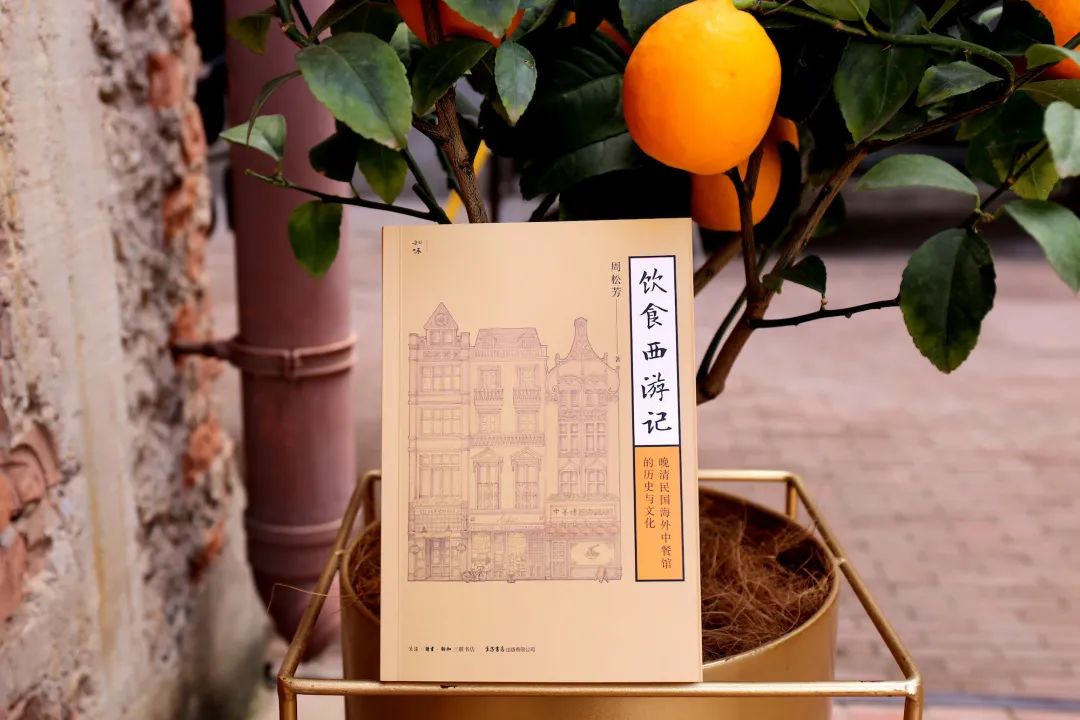
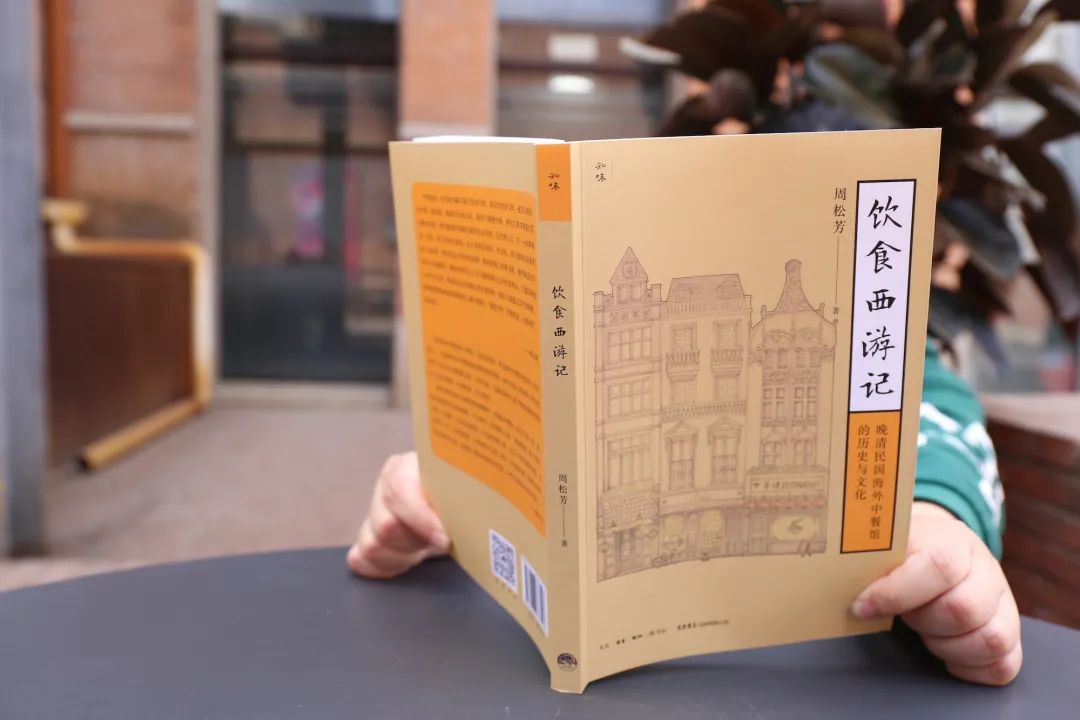
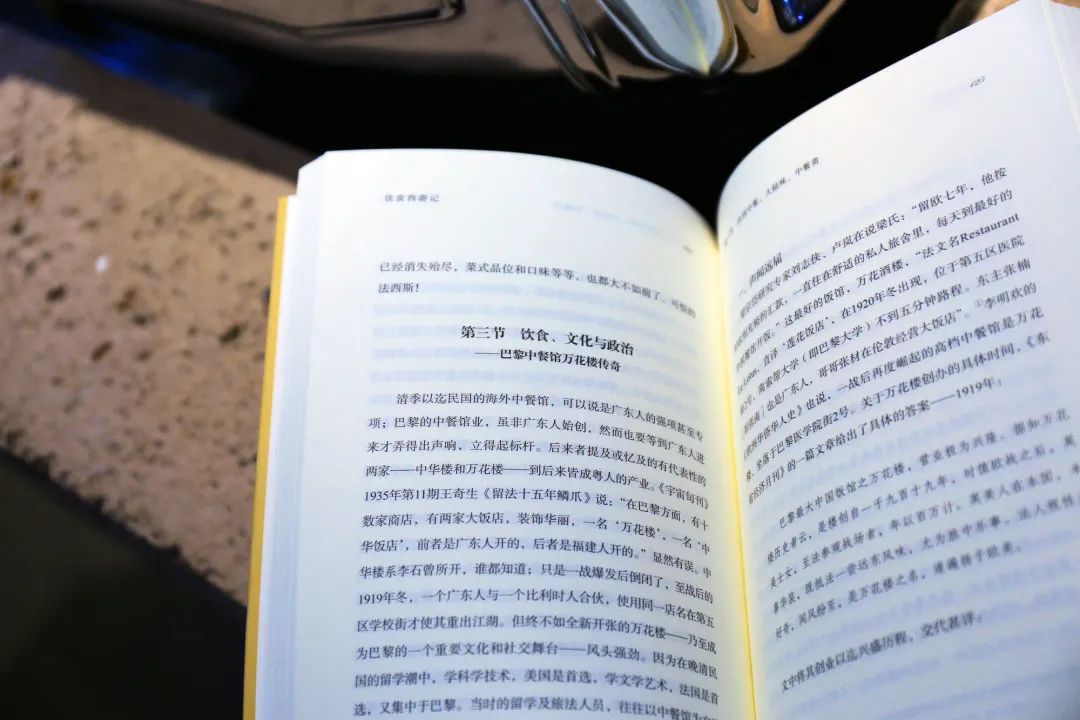
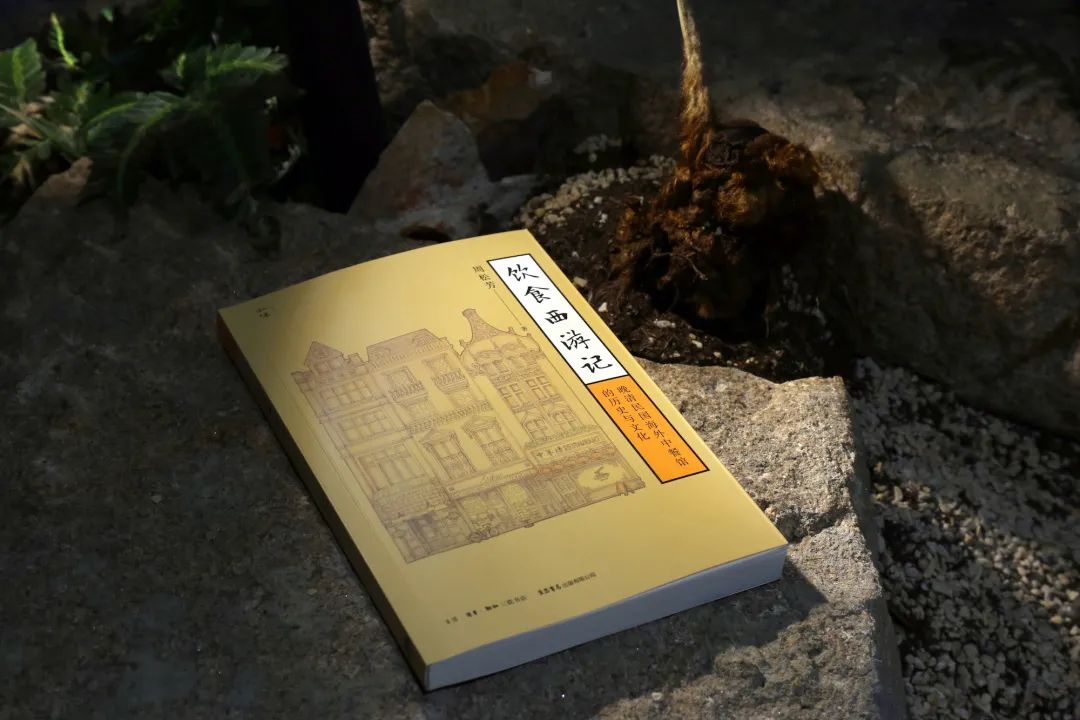
Original title: "Chinese restaurants and tea restaurants in Britain, overseas Chinese food, it is right to be right"
Read the original text